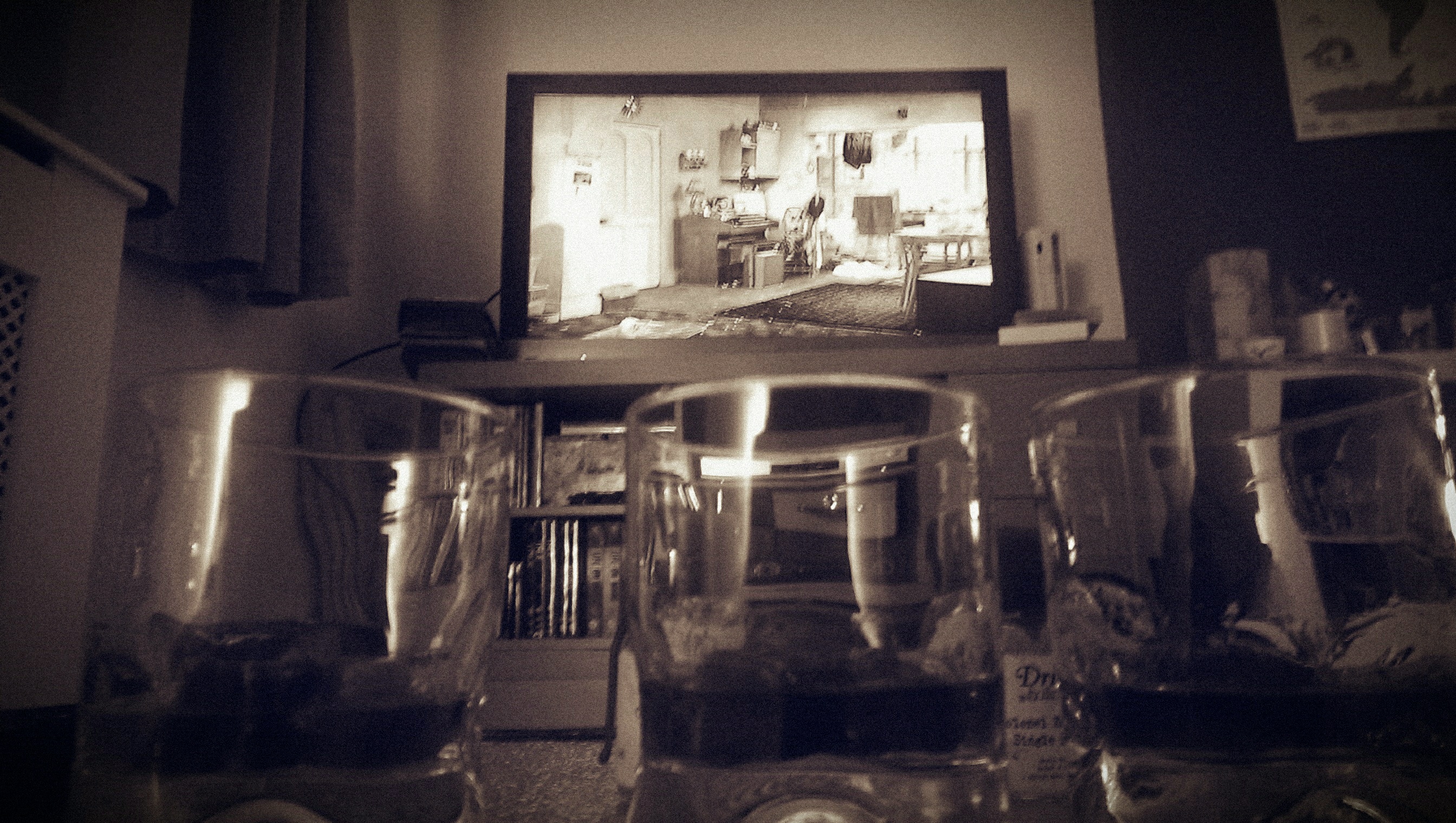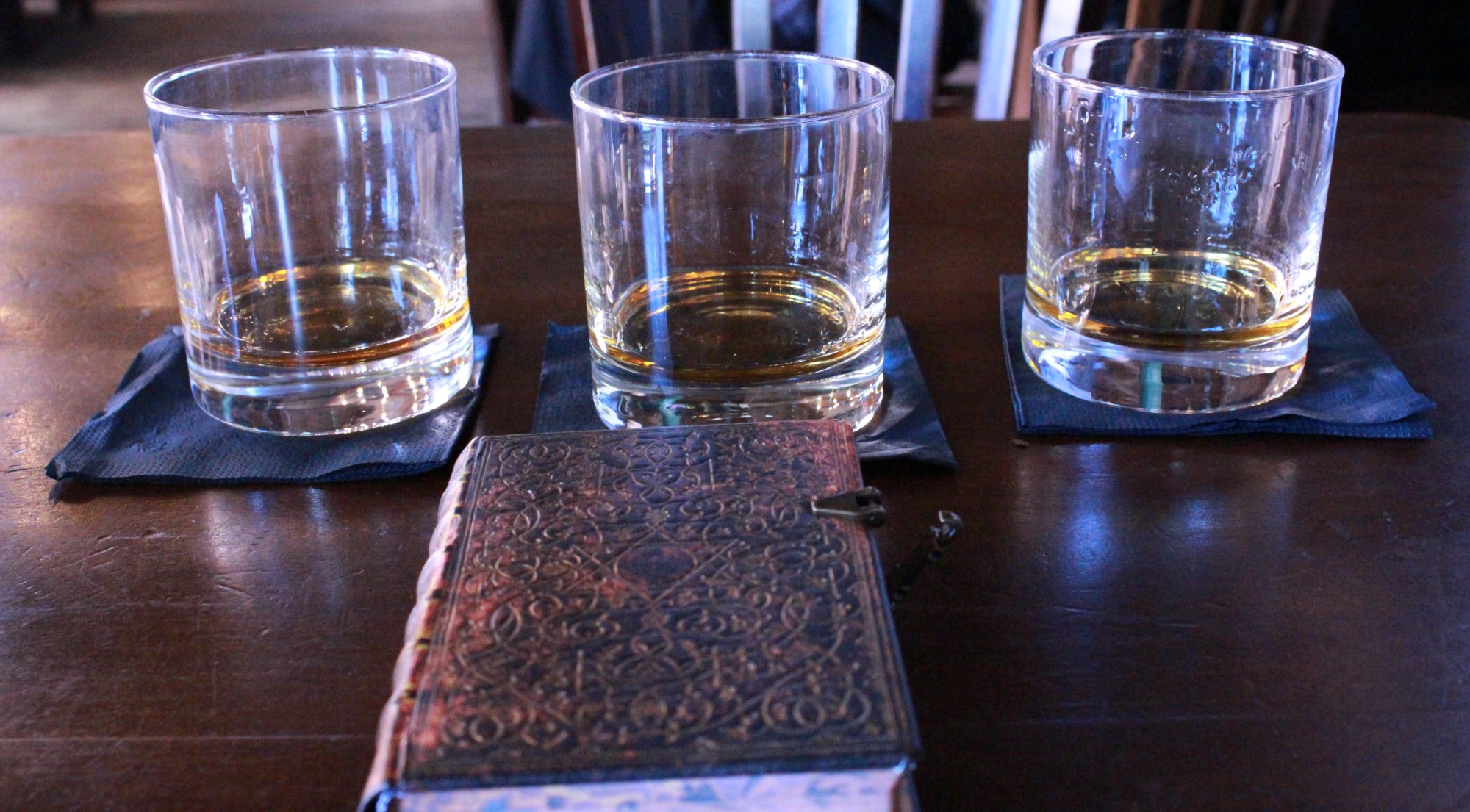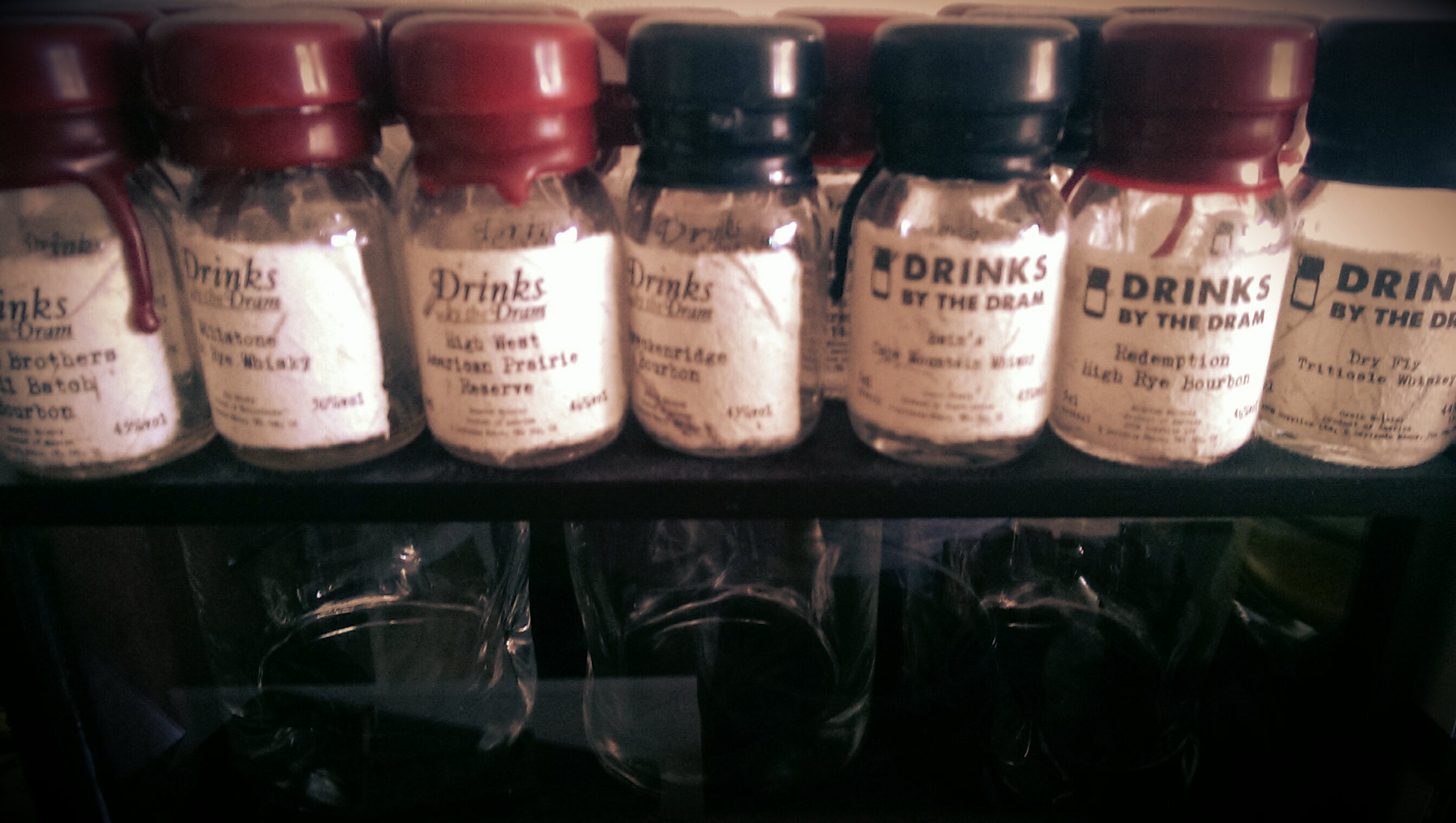My interest in American whiskey all came about because I bought a set of three whiskey miniatures and tried them side by side to see if I could tell the difference. That was a long time ago, and whilst I remember being able to distinguish one from the next, I didn’t really have the vocabulary to describe how they were different.
 Of course I know a lot of people who think it very pretentious to say you can appreciate the qualities and distinguish the unique congeners of one whiskey over the next – perhaps here in the UK that sort of ‘tasting’ is too closely associated with wine and high society! But even in the US I spoke to people who challenged me with ‘don’t they all taste the same’?
Of course I know a lot of people who think it very pretentious to say you can appreciate the qualities and distinguish the unique congeners of one whiskey over the next – perhaps here in the UK that sort of ‘tasting’ is too closely associated with wine and high society! But even in the US I spoke to people who challenged me with ‘don’t they all taste the same’?
I’m not going to brag that I have the most refined palate in the world. All I will say is that in our society we are blessed with an extremely varied selection of things to eat and drink. Most people know what a regular lager tastes like, but in a blind test would they be able to tell a Becks from a Budweiser? Perhaps not if you’re the sort of drinker who sticks to one brand or just buys whatever there’s a deal on. But I suggest that if they regularly drank different beers side-by-side, they would. And that’s really all there is to learning to taste whiskey or anything else. Trying lots of different ones alongside each other.
So that I remain clear, I’ll take this opportunity to explain why I’m writing ‘whiskey’ and not ‘whisky’. I don’t intend to let it detain me long – if it’s from the US or Ireland, it’s ‘whiskey’, if it’s from anywhere else it’s ‘whisky’. I’m spelling it ‘whiskey’ because most of the drinks I’ll cover come from the US. When I’m talking about Canadian whisky specifically, I’ll…well, you already saw what I did there. Got it? Good.
The obvious challenge if you want to get into this is actually accessing a variety of whiskeys without outlaying on a bunch of expensive bottles. Most bars offer Jack Daniels, and sometimes one or two other choices. In later blogs I’ll be covering some of the best bars and restaurants in the UK to go to seek out a bigger variety of American whiskeys. If you’re willing to make a smaller outlay of cash, an excellent option is www.masterofmalt.com, who make most of the whiskey on their site available to buy as a 30ml dram.
For £26 you could try their pre-picked Bourbon Tasting Set; the whiskeys in this set have changed since I was given it for my birthday two years ago, but they come with tasting notes to give you an excellent kick-start to building your bourbon tasting vocabulary.
However, if you’re lucky enough to find somewhere that offers a choice of bourbon, here’s an excellent way to get to grips with how different different whiskeys can be. When I started out, I didn’t know all the words to describe whiskey flavours, but I did identify a spectrum between what I called ‘musty’ at one end, ‘sweet’ in the middle, and ‘tangy’ at the far end. That was my best attempt to describe the differences at the time. To see what I mean, try to get yourself a glass of the following commonly available bourbons:
Buffalo Trace: One of the first bourbons I tried. This one, to me, was and is at ‘musty’ end of the bourbon spectrum. It’s smokey, thick and darkly woody. By ‘musty‘ I mean think of a box which has been in the attic for a long time, or some antique furniture. That may not sound terribly appealing, but that’s often the way when you’re describing whiskey! Drinking something that has notes of tobacco leaf or ‘raw goat meat’ may not grab you at first, but it makes sense when you’re drinking it.
Bulleit: This is another musty one, and probably the more common ‘alternative’ to Jim Beam found in bars. I also place this on the ‘musty’ end of the scale, in that it is very rich and smokey, with what the connoisseurs call a ‘cigar-box quality’ to it, but it a little sweeter and more caramelly than the Buffalo Trace.
Maker’s Mark: Another fairly easy one to come by in Blighty, this one is right at the other end of my early tasting spectrum, being what I would have called a ‘tangy‘ whiskey. It has a much lighter flavour, which is quite common among whiskeys from the Heaven Hill distillery because a lot of them use wheat instead of rye as the secondary grain (more on that in a later post!) which gives it a softer taste and a gentler mouthfeel. I’ve personally learned that I really like a rye-rich bourbon, but I know plenty of people who love the wheated bourbons, and I’ve tasted some fantastic ones myself – not least the venerable and highly elusive whiskeys from the Old Rip Van Winkle distillery. Given the vanishingly small odds of finding one of their whiskeys in the UK, try a glass of Maker’s Mark or Larceny bourbon for an accessible way in to these kind of whiskeys.
Woodford Reserve: Another bourbon which is quite commonly found in the UK – in restaurants more so than bars for some reason – this represents that ‘sweet spot’ in the middle of my early bourbon spectrum. In fact it will quickly become apparent in this blog that even nearly one hundred bourbons on from when I began, Woodford Reserve Distillers Select remains one of my absolute favourite whiskeys. It’s thick with vanilla, caramel and oak notes, and is just brilliantly rich and tasty.
 So if you can arrange to have in front of yourself a glass of Maker’s Mark, Woodford Reserve and Bulleit or Buffalo Trace, try a sip of each one with a swig of water in between. I’m pretty sure that even a total bourbon beginner will agree that they do not taste the same. These are the exact whiskeys I always use to demonstrate this point to people (you could use Jim Beam as the ‘middle’ of the spectrum instead of Woodford Reserve, although it leans just slightly more towards the tangy side if you ask me…and Woodford is a real treat you don’t want to miss out on).
So if you can arrange to have in front of yourself a glass of Maker’s Mark, Woodford Reserve and Bulleit or Buffalo Trace, try a sip of each one with a swig of water in between. I’m pretty sure that even a total bourbon beginner will agree that they do not taste the same. These are the exact whiskeys I always use to demonstrate this point to people (you could use Jim Beam as the ‘middle’ of the spectrum instead of Woodford Reserve, although it leans just slightly more towards the tangy side if you ask me…and Woodford is a real treat you don’t want to miss out on).
I’ve even had my partner set up a blind test to see if I could identify Maker’s, Bulleit and Woodford just by smelling and tasting. Because these three are, to me, on totally different points of the ‘spectrum’, it turned out I was able to identify them just from the smell.
That may sound a little pretentious right now, but once you’ve been through a couple of flights of American whiskey, I’m confident you’ll agree that it’s a big world to explore!

You’ve just taken your first step into a larger world.

